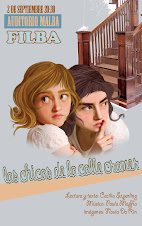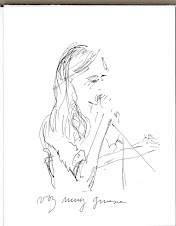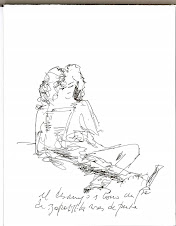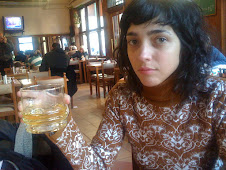Intelligence Column

Cristina Fernández de Kirchner has proven irresistible to many Argentines. Meanwhile, the debt crisis forced Italy’s Silvio Berlusconi from office. (YVES HERMAN/REUTERS)
SETTING A NEW STAGE
By POLA OLOIXARAC
While leaders in Europe and the United States struggle with the fallout of the economic downturn and public dissatisfaction with government, Argentine president Cristina Fernández de Kirchner recently captured 55 percent of the vote to serve as president for four more years. She’s one of the most popular leaders in South America and Argentina’s first elected female president.
While leaders in Europe and the United States struggle with the fallout of the economic downturn and public dissatisfaction with government, Argentine president Cristina Fernández de Kirchner recently captured 55 percent of the vote to serve as president for four more years. She’s one of the most popular leaders in South America and Argentina’s first elected female president.
Next door, President Sebastián Piñera is coping with widespread student protests and has lost much of the support he had after the 33 Chilean miners were rescued last year. Recent polls show only 26 percent now approve of his government. Evo Morales, the president of Bolivia, is dealing with a restive indigenous population that helped put him in power but is now chafing over the rising influence of Brazil.
Meanwhile, Cristina’s second term in office was never in doubt. Her brand of populism, support of gay marriage and a hiring binge of state employees has proven irresistible to many Argentines.
Her popularity can be partly attributed to better days in Argentina, where the economy has grown for nine straight years, at rates second only to Peru in the region. But ten years after the debt default that brought down the Argentine economy, the enduring mystique of the Kirchners goes beyond the tide of stability and the spreading affluence, fueled by high commodity prices, that has coincided with their hold on the top office.
Néstor Kirchner was elected president of Argentina in May of 2003, and Cristina followed him by winning the presidential vote in October of 2007. The Kirchners found a way to update the power-couple iconography of General Juan Domingo Perón and Eva Perón in the 1940s. The Kirchners, surrounded by the national colors, waved together from the Casa Rosada balcony to the congregated masses, evoking images of the Peróns.
Cristina’s first term was tumultuous and full of drama. Like Lindsay Lohan or Britney Spears, Cristina was also prone to seducing fans and aggravating opponents. She came forth as strong but humane, resolute but emotional, much as a convincing actress would impersonate the ideal of a Latin female leader. Evita had left her successful stage and film career to serve as a politician alongside her husband; Cristina took on the presidency as her personal stage. She was always at the center of the action. She liked suspense: to the dismay of her own supporters, the public and critics, she kept her script to herself until the last minute.
As Cristina continued the bullying style of government her husband was known for, she was criticized for being too authoritative, too stubborn. In a sexist yet broadly matriarchal society, Argentines reviled this behavior, but at the same time seemed to admire her for it. Many felt in their guts that the government indecisiveness was partly to blame for the 2001 crisis.
The Peronist Party has always thrived on manipulating the media. Perón had mourned his cancer-stricken, immensely popular and equally vilified wife Evita. When Néstor Kirchner died last year, Cristina reverted to the Perón-Evita role-play. She changed her style, appearing in dignified black dresses, carefully coiffed hair, thick eyelashes and smoky eye makeup. Her voice would often break down in public when alluding to her late spouse. As the national widow, she found the role in the play that suited her best: the lone woman in power, the vestal for the nation.
But this new Evita was not calling on the working classes as Evita had in her time. Cristina was winning over the middle class, those affected by the 2001 crisis, telling them what they wanted to hear — that there was a new Argentina that would include everyone.
Is it possible that 10 years from now, a Greek or an Italian politician, who is as unknown as Cristina was in 2001, will rival her in popularity? Who will rise and take advantage of the financial crisis?
The demonstrations that rocked Argentina in 2001, when the sound of banging pots filled the air in cities across the country, were more vehement and spontaneous than today’s Occupy Wall Street movement, though they share common threads.
The Argentine assemblies called themselves anti-system. They condemned financial speculation, endorsed recycling and professed a lost faith in the capitalist system. The assemblies of angry citizens, known as “cacerolazos,” saw politicians as traitors to the state, but did not offer political alternatives to a system they felt was corrupt. Assemblies alone couldn’t bring about change; it took a savvy politicians like the Kirchners to channel the discontent.
“I don’t think I’ve ever seen a better administration,” said Carlos Daniel Sturla, 37, a lawyer from Buenos Aires. “It’s like she’s finally building the country we all wanted to see.”
No Argentine would have said that a decade ago. Is there a chance a new power couple will emerge and sift through the anger that is driving protests around the world today, inspire citizens and unite a country ?
(Pola Oloixarac’s novel “The Wild Theories” is available in French, Dutch, Italian, Finnish and Portuguese translations. She blogs at melpomenemag.blogspot.com. Send comments to intelligence@nytimes.com.)











































































































































No hay comentarios.:
Publicar un comentario